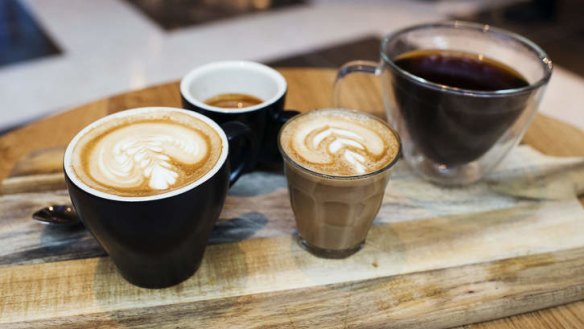Maximising flavour in white coffee

Between 80 and 85 per cent of coffee orders at a busy cafe are for caffe latte, flat white or cappuccino. With 30 millilitres of espresso to about 150 millilitres of milk, that's an awful lot of dairy.
So how do we get the coffee to taste like, er, coffee with all the cowjuice?
Traditionally, one answer is roast dark, and blend in some robusta.
But Darren Silverman from Black Velvet Espresso in the city says the key is to look for "flavour that rings true when you put milk with it".
"You can do it without roasting dark," Silverman says, citing Black Velvet's Night Swimmer blend of Brazil, Indian monsoon, Ethiopia Yirgacheffe and Costa Rican microlot.
"The Indian Monsoon is a big, richly flavoured coffee that's almost too much on its own," he says. "But in a blend it's lovely."
Small Batch roaster Tim Varney says it's time to lose the mindset that blends are for milk and single origins are for black. "That's bollocks," he says. "There are only a few coffees that don't work with milk."
He draws an analogy with wine: "A sommelier would never say, 'Would you prefer a blend or a single origin?' For example, Burgundy is a single varietal and bordeaux is a blend. But you're having a conversation along the lines of, 'Well this one tastes like this, and this one tastes like that'.
"So rather than asking, 'Can you taste the coffee through the milk?', we need to make it a little more complex by saying, 'These are the kinds of flavours you get with milk and coffee combined'."
Varney says people (wrongly) assume that earthier coffees work better with milk. He cites an Ethiopian Hunkute: "A classic Ethiopian – floral, herbal, citrus, delicate – which we all thought wouldn't work with milk. But when we taste it with milk it's fantastic: you get a lovely malted milk flavour, very much in balance."
Does he roast specifically for milk? "We roast to have an espresso taste fantastic. That's the priority. It's really difficult to make a good espresso taste bad with milk – unless you're putting too much milk in."
"There's been a tendency over the past three or four years for specialty roasters to push the limits of transparency in their roasting style, highlighting acidity and allowing the coffees to speak for themselves. But if you push that too far you get underdeveloped flavours: sour, astringent, vegetal.
"That can be masked in milk, but it's going to taste terrible in espresso."
- More:
- Drinks